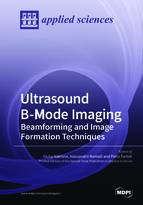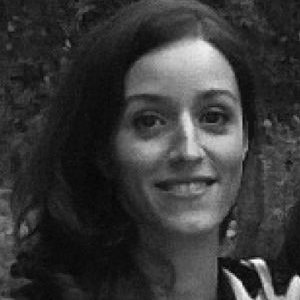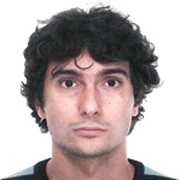Ultrasound B-mode Imaging: Beamforming and Image Formation Techniques
A special issue of Applied Sciences (ISSN 2076-3417). This special issue belongs to the section "Acoustics and Vibrations".
Deadline for manuscript submissions: closed (31 December 2018) | Viewed by 74721
Special Issue Editors
Interests: ultrasound medical imaging; beamforming and image reconstruction techniques; signal processing; elastography; high-frame-rate imaging; ultrasound simulations and system-level analyses; microwave imaging for biomedical applications
Special Issues, Collections and Topics in MDPI journals
Interests: ultrasound systems; real-time signal processing; sparse arrays; ultrasound imaging; high frame rate imaging; cardiac imaging; flow imaging; vector Doppler; motion estimation; tissue Doppler imaging; elastography; ultrasound beamforming; pulse compression
Special Issues, Collections and Topics in MDPI journals
Interests: ultrasound systems development; innovative ultrasound imaging methods; ultrasound beamforming; flow and tissue Doppler imaging; vector Doppler; real-time signal processing
Special Issue Information
Dear Colleagues,
We are pleased to introduce this Special Issue on “Ultrasound B-Mode Imaging: Beamforming and Image Formation Techniques” to be published in the open access journal Applied Sciences. Among the other diagnostic imaging modalities, ultrasound medical imaging stands out for patient-friendliness, high temporal resolution, low cost, and absence of ionizing radiation. On the other hand, it may still suffer from limited detail level, low signal-to-noise ratio, and narrow field-of-view. In the last decades, new beamforming and image reconstruction techniques have emerged which aim at improving resolution, contrast, and clutter suppression, especially in difficult-to-image patients. Nevertheless, achieving a higher image quality is of the utmost importance in diagnostic ultrasound medical imaging, and further developments are still indispensable. From this point of view, a crucial role can be played by novel beamforming techniques as well as by non-conventional image formation techniques (e.g., advanced transmission strategies, compounding, coded and harmonic imaging, etc.).
This Special Issue wishes to include novel contributions both on ultrasound beamforming and image formation techniques, particularly addressed at improving B-mode image quality and related diagnostic content. We warmly invite authors to collaborate to the Special Issue with original high-quality research or review papers.
Yours faithfully,
Dr. Giulia Matrone
Dr. Alessandro Ramalli
Prof. Piero Tortoli
Guest Editors
Manuscript Submission Information
Manuscripts should be submitted online at www.mdpi.com by registering and logging in to this website. Once you are registered, click here to go to the submission form. Manuscripts can be submitted until the deadline. All submissions that pass pre-check are peer-reviewed. Accepted papers will be published continuously in the journal (as soon as accepted) and will be listed together on the special issue website. Research articles, review articles as well as short communications are invited. For planned papers, a title and short abstract (about 100 words) can be sent to the Editorial Office for announcement on this website.
Submitted manuscripts should not have been published previously, nor be under consideration for publication elsewhere (except conference proceedings papers). All manuscripts are thoroughly refereed through a single-blind peer-review process. A guide for authors and other relevant information for submission of manuscripts is available on the Instructions for Authors page. Applied Sciences is an international peer-reviewed open access semimonthly journal published by MDPI.
Please visit the Instructions for Authors page before submitting a manuscript. The Article Processing Charge (APC) for publication in this open access journal is 2400 CHF (Swiss Francs). Submitted papers should be well formatted and use good English. Authors may use MDPI's English editing service prior to publication or during author revisions.
Keywords
-
Ultrasound medical imaging
-
Beamforming
-
Image formation
-
Transmission strategies
-
Image compounding
-
Coded imaging
-
Super-resolution imaging
-
Harmonic imaging
-
Image quality
-
Signal processing








